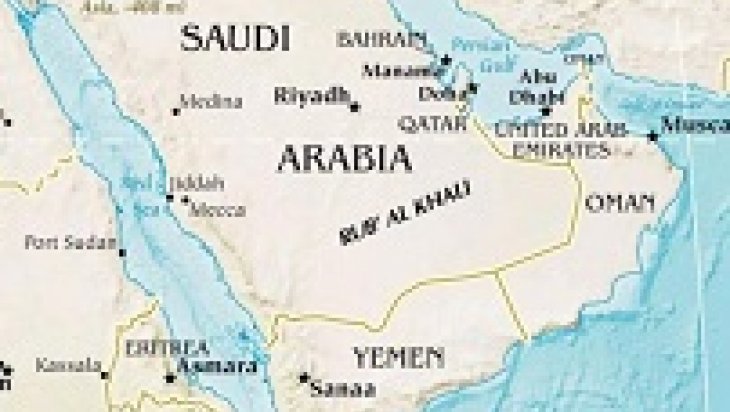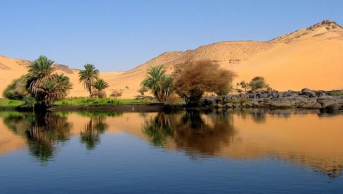Agreement over Disi Aquifer: An Analysis of Saudi-Jordanian Cooperation on Transboundary Groundwater Management

An Agreement between the Government of the Hashemite Kingdom of Jordan and the Government of the Kingdom of Saudi Arabia for the Management and Utilization of the Ground Waters in the Al-Sag/Al-Disi Layer was signed in April this year. The accord between two countries could be seen as a significant step towards coordination of a significant ground water body extending hundreds kilometers long, in an area where surface waters are virtually non-existent. Al-Disi aquifer (known as As-Saq aquifer in Saudi Arabia) is one of the most important water resource in the region storing approximately 280 km3 of good-quality water.
The Agreement calls for the liquidation of all existing activities in the Protected Area (the Prohibited Area), which depends on the extraction of groundwaters therefrom, for a period of five years from the date of signature of this Agreement. It also stipulates that the maintenance of the Protected Area (the Prohibited Area) between the two States, free from all activities which depend on the extraction of groundwaters from the Protected Area, shall be realized by two countries. According to the Agreement, observatory wells shall be dug in the Protected Area, for the purpose of obtaining information relating to the quality and level of the groundwaters, on the condition that prior coordination through the Technical Joint Committee is carried out before the digging of any well.
On the other hand, the digging of wells in the Management Area (which is larger than the Protected Area) has to be done in accordance with the technical standards approved by the two States.
Signatories also agreed to prohibit horizontal or tilted digging of wells in order to avoid any pollution. Further, the protection of groundwater in the Management Area between the two States from any pollution shall also be accomplished by additional means. According to the Agreement, it is not permissible to inject any pollutant, whatever its quality or quantity, into the groundwaters in the Management Area.
One of the notable points in the Agreement is that it limits the use of groundwaters from the Management Area only to the municipal usage. That is to say, Disi aquifer would no longer be used for irrigation. However, given the intense Saudi use in the area for agricultural purpose, it has been expected that the Agreement would apply to new water uses only. It would be unreasonable to expect that Saudi Arabia would have agreed to halt its existing uses for irrigation.
Another significant dimension of the Agreement relates to the issue of institutionalization. Two countries accepted to establish a Joint Technical Committee to coordinate the tasks proposed by the Agreement. The Joint Technical Committee shall be composed of five members from each country.Saudi side shall be headed by the Undersecretary of the Ministry of Water and Electricity, and Jordanian side by the Secretary-General of the Ministry of Water and Irrigation. Regularly meeting every six months, the Joint Technical Committee shall be entitled to use experts and advisers, and employ assistants, technicians and officials from citizens from the two States or otherwise, according to its needs, for carrying out specified activities. Main responsibilities of the Joint Technical Committee have been described as follows: a. The supervision of the implementation of the terms of the Agreement.b. The supervision and observation of the groundwaters, from the point of view of the quantity of water extracted, its quality and level, and c. The collection and exchange of information, statements and studies and their analysis, and the submission of the results to the competent authorities in Saudi Arabia and Jordan.
It should be noted that the information gathered or created by the Joint Technical Committee shall be the property of the two countries, and shall not be shared with third parties without written approval of both Saudi Arabia and Jordan.
According to the Article 4, the Agreement shall be reviewed every twenty-five years. Article 4 also mentions about the competent authorities, responsible from studying the amendments if a need arises. As it could be inferred from previous parts of the Agreement, the competent authorities would be Undersecretary of the Ministry of Water and Electricity for the Saudi side, and the Secretary-General of the Ministry of Water and Irrigation for the Jordanian side.
In brief, apart from the issues related to legal conformity of the Agreement with the existing body of international law on transboundary waters, this Agreement between Saudi Arabia and Jordan corresponds to initiation of a new setting in relations transboundary water resources between two countries from a number of aspects: First the countries decided to institutionalize their relations and further their cooperation over Al-Disi (As-Saq) aquifer, seeing the risks of not doing so. Uncontrolled exploitation of a fossil aquifer like Disi appeared to be unsustainable and thus so critical for Tabuk region in Saudi Arabia, and for whole Jordan. Secondly, two countries agreed to limit new water extractions solely to municipal needs, which sits top of the water use hierarchy. Framing a new scheme for agricultural development, free of Disi waters, may trigger the use of innovative technologies and water-saving practices in the region at a greater scale. Thirdly, two countries attached a great importance to the “quality” issue, and reached a consensus to prevent deterioration of this vital source of water. Thinking of water quality as a first-rank issue and indispensable element in water resources management might be signalling the rise of a new paradigm in the Middle-East where countries have started to focus on quality related -and from a broader level- environmental concerns, on a par with the quantity issues.










